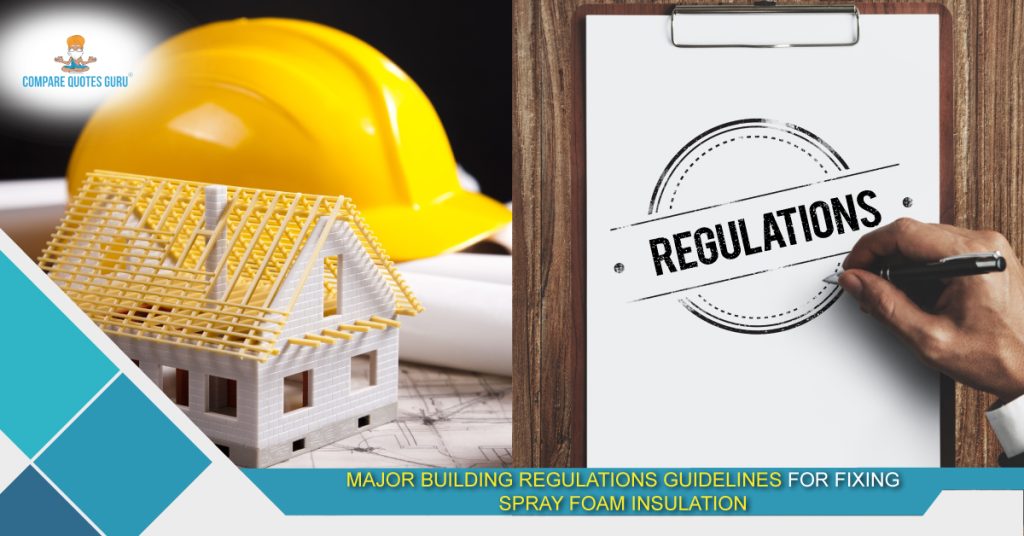Following building codes helps to protect a home’s safety and protect its worth, but loft insulation codes can also assist to cut carbon emissions and save electricity bills by up to 20%. Because of a deeper comprehension of energy efficiency, these requirements have changed some few points. The minimum energy efficiency standards laid out in the Approved Documents must be met when installing insulation in your loft. If a technical or functional upgrade is not possible, the component should be modified to the highest standard that can be attained with a simple return of no more than 15 years. If you’re putting loft insulation as a component of a roof rehabilitation job that involves more than 25% of the roof being replaced, the degree of insulation should fulfill building code requirements.
THE IMPORTANCE OF INSULATION REGULATIONS
Loft insulation standards are evaluated on a regular basis to ensure that they continue to benefit both the property and the environment. Without appropriate insulation, it is believed that roughly 25% of heating purposes is lost through the roof, and this has an influence on other areas of the house, such as boiler and pipe wear and tear.
For any sort of loft insulation, government requirements mandate a wall width of 270mm, but experts advocate selecting products with a low U-value, or heat capacity. The less the U-value, the less energy can leave through the insulation, and 0.16 W/mK is the industry norm or watts per meter squared per degree kelvin. It suffices to say that adhering to these rules and suggestions would keep families warmer while also helping the environment by lowering CO2 emissions.
Frequently Asked Questions Loft Insulation Cost UK
How much does it really cost to install spray foam insulation in Cost UK?
“The average loft insulation cost is between £6 and £13 per square meter. This means that it should cost no more than about £1250 to insulate a 4-bedroom detached home.”. Check out the complete cost guide UK to find out everything if you need to know.
LOFT INSULATION HAZARDS
There are definitely many potential hazards to figure out in all homes, but these are more commonly found in older homes.
- Condensation and DampIn many sections of the house, dampness and dampness can be a problem. They can significantly reduce the efficacy of insulation in the loft, with consequences such as mildew and bad air quality frequently going unnoticed.Insulation applied without dealing with these issues might exacerbate them, which is another convincing reason for consumers to hire a professional to do a thorough inspection.
- VentilationEven while loft insulation helps to keep warmth in the house, proper ventilation is still necessary. The movement of air via vents, grilles, and air bricks should not be obstructed by insulation.
- Roofs with a flat surfaceSome houses do not have a loft and have a flat roof. These could be insulated and could save energy and money as a result. Insulating rooftops from the above is recommended by the Energy Savings Trust, and it’s easiest to perform while renovating or repairing the roof.
WHEN SHOULD LOFT INSULATION BE REPLACED?
The most recent insulation devices are created to last for forty years, however, homeowners should be warned that if their building is older than 10 years, the loft insulation uk Cost may not meet current criteria. Clients may typically perform a simple check by getting higher to the attic and estimating the thickness of the insulating material from the bottom board to the top.
Because laws did not demand the same layer of insulation in older homes, the existing insulation is much more prone to be destroyed over time. Increased heating expenses and areas of the house that feel colder when the insulation has worn away are two telltale symptoms to look out for.
Thermal elements, such as a wall, ground, or roof that separates a heated or cooled space from the outside, a superheated part with the same structure, or a structure excluded from the building laws, including a porch or greenhouse, are all necessary to be renovated or removed under the construction regulations. This could be at the roof level with loft insulation, where you add, remove, or improve the thickness of the insulation. These guidelines apply when more than 50% of an attic is renovated.
If the roof area currently has no insulation, you’ll need to install thermal insulation to obtain a U-value* of at least 0.16W/m2K. For example, a mineral fiber loft insulation coil with a diameter of 250mm. If you have current insulation with a U-value of less than 0.35W/m2K (about 125mm of mineral wool loft roll), you will need to replace or add more insulation to obtain a U-value of at minimum 0.16W/m2K. If the insulation of the attic at ceiling level is not required for particular reasons somewhere else in the regulations, there is no necessity to notify the local authorities or obtain clearance under the building regulations.
Whether or not the work is notified, the local authority retains the jurisdiction to require the building owner to comply with the building regulations. If the quality of thermal insulation efficiency is questioned during a building survey, the selling of a home may be hampered. Indeed, consider how you will secure power and water services if you’re converting a loft area.

